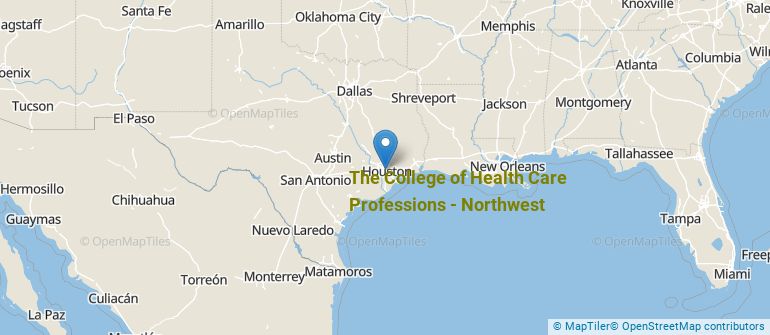 by our College Data Analytics Team
by our College Data Analytics TeamExplore the best ranked schools for the programs you are most interested in.
CHCP - Northwest was not ranked in College Factual's Best Overall Colleges report this year. This may be because not enough data was available.
See all of the rankings for The College of Health Care Professions - Northwest.
If you are worried about getting into The College of Health Care Professions - Northwest, don't be. The school has a liberal open admissions policy, which means you only need to meet basic requirements in order to be admitted. Still, be sure to submit a complete application and provide any other requested materials.
At The College of Health Care Professions - Northwest, the student to faculty ratio is 20 to 1. Compared to the national average of 15 to 1, this is somewhat high. This could mean that class sizes may be larger than they are at other colleges or universities or that professors may be required to teach more classes.
Another measure that is often used to estimate how much access students will have to their professors is how many faculty members are full-time. The idea here is that part-time faculty tend to spend less time on campus, so they may not be as available to students as full-timers.
The full-time faculty percentage at The College of Health Care Professions - Northwest is 34%. This is lower than the national average of 47%.
The on-time graduation rate is the percent of first-time, full time students who obtain their bachelor's degree in four years or less. This rate is 27% for first-time, full-time students at CHCP - Northwest, which is lower than the national rate of 33.3%.
During the 2017-2018 academic year, there were 2,811 full-time undergraduates at CHCP - Northwest.
The net price is calculated by adding tuition, room, board and other costs and subtracting financial aid.Note that the net price is typically less than the published for a school. For more information on the sticker price of CHCP - Northwest, see our tuition and fees and room and board pages.
It's not uncommon for college students to take out loans to pay for school. In fact, almost 66% of students nationwide depend at least partially on loans. At CHCP - Northwest, approximately 77% of students took out student loans averaging $6,594 a year. That adds up to $26,376 over four years for those students.
Get more details about paying for The College of Health Care Professions - Northwest.

See which majors at The College of Health Care Professions - Northwest make the most money.
Get more details about the location of The College of Health Care Professions - Northwest.

Contact details for CHCP - Northwest are given below.
| Contact Details | |
|---|---|
| Address: | 12230 Northwest Freeway, Houston, TX 77092 |
| Phone: | 713-425-3100 |
| Website: | www.chcp.edu/ |
| Most Popular Majors | Bachelor’s Degrees | Average Salary of Graduates |
|---|---|---|
| Allied Health & Medical Assisting Services | 586 | NA |
| Health & Medical Administrative Services | 458 | $41,507 |
| Allied Health Professions | 199 | NA |
| Dental Support Services | 85 | NA |
| Nursing | 21 | NA |
| Practical Nursing & Nursing Assistants | 10 | NA |
Online learning is becoming popular at even the oldest colleges and universities in the United States. Not only are online classes great for returning adults with busy schedules, they are also frequented by a growing number of traditional students.
In 2022-2023, 2,319 students took at least one online class at The College of Health Care Professions - Northwest. This is an increase from the 2,177 students who took online classes the previous year.
| Year | Took at Least One Online Class | Took All Classes Online |
|---|---|---|
| 2022-2023 | 2,319 | 2,087 |
| 2021-2022 | 2,177 | 1,943 |
| 2020-2021 | 2,036 | 1,775 |
| 2018-2019 | 916 | 916 |
Learn more about online learning at The College of Health Care Professions - Northwest.
Footnotes
*The racial-ethnic minorities count is calculated by taking the total number of students and subtracting white students, international students, and students whose race/ethnicity was unknown. This number is then divided by the total number of students at the school to obtain the racial-ethnic minorities percentage.
References
More about our data sources and methodologies.